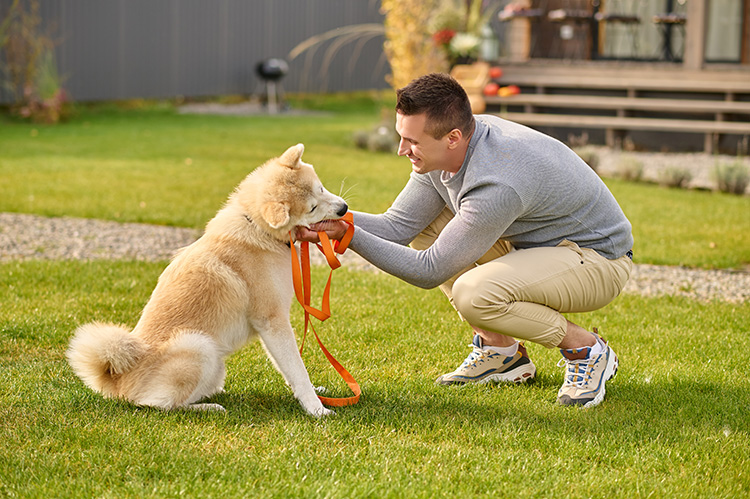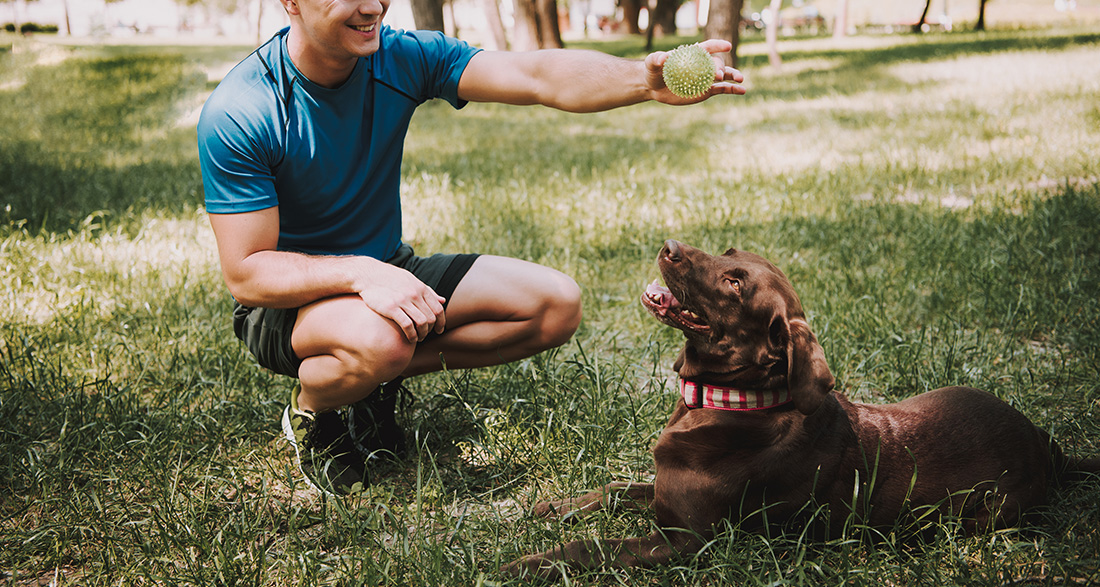There are not as many dog training rules to follow as is often claimed. However, some rules are essential when training a dog!
Every dog needs training!
Whether small or large, well-behaved or disobedient – every dog needs training. And that training should start from the beginning. While it’s important not to overwhelm a puppy in the first days of cohabitation, puppy training can commence early. Consistency in dog training should be established soon, as it is much harder to untrain a dog from undesirable behaviors than to teach them the right behaviors from the start. Unfortunately, many mistakes are made in dog training, but with our tips, you’ll surely become an excellent human-dog team.

Dog Rule 1: Consistency in Dog Training
What’s allowed once is always allowed!
Your dog doesn’t understand why it’s allowed on the couch one day and not another, or why it can sleep in bed sometimes but not always. Dog training is effective only when it is understandable and consistently applied. This includes being consistent in your actions.
Positive reinforcement – No punishment
When the dog does something good, it should be praised and rewarded. Often, this is taken for granted and forgotten. Don’t skimp on praise in the form of treats, petting, words, or playtime. If the dog doesn’t cooperate or does something incorrectly, it shouldn’t receive a reward. This teaches the dog that rewards are only given for correct behavior and only when it responds immediately. If the owner has to command the dog five times to, for example, sit, it’s not worth a food reward. However, it’s not a punishment either!
Don’t overwhelm the dog
If the dog is to learn to come reliably when called, it should be called only when the owner is sure the dog will come, or when the owner can bring the dog to them, for example, if the dog is on a leash. If the owner is unsure or expects the dog not to come, they should go to the dog without comment, leash it, and continue walking together.
Consistent dog training
If the owner calls the dog multiple times while it happily continues playing with other dogs or follows an interesting scent, the dog quickly learns that it can easily ignore the command and still have fun. Don’t let the situation rest; go to the dog if necessary and leash it.
Dog Rule 2: Communication and Respect in Dog Training
Understand the language of dogs
If the owner wants the dog to cooperate, they must communicate with the dog in a way it can understand. It’s counterproductive to shout at the dog and approach it when the goal is for it to come back.
Understanding our dogs’ body language
It is important to interpret a dog’s body language correctly. This is helpful in dog training because misunderstandings often occur between humans and dogs.
Interrupt training when necessary
Try to recognize when the dog is afraid or stressed. In such cases, training should be temporarily put on hold, and attention should be given to the dog.
Perfect timing
Dogs don’t understand praise or reprimands after the fact. This must occur immediately after a specific action. A clicker can be helpful for tricks or remote training.
Dog Rule 3: Fairness in Dog Training

Age-appropriate dog training
Puppies have a very short attention span. Therefore, one should not expect too much during puppy training. The adolescence phase can be challenging too. It requires special patience because many young dogs seem to have forgotten much of what they learned during puppy training.
Performance-based dog training
The dog should not be overwhelmed. If it doesn’t understand something, break it down into smaller and simpler steps. Some things, like complex dog tricks, might be permanently too difficult for the dog, and it’s best to avoid them. Not every dog is capable of everything another dog can do.
Mistakes are part of it
Both the dog and the human make mistakes in dog training. It’s important that the human is willing to learn from their mistakes and gradually become a real team with their dog over time.
Trust in the dog owner
If the relationship between human and dog is based on respect, and the dog knows it is loved and the owner means no harm, the dog can endure being scolded unjustifiably or if the owner overlooks something.
Dog Rule 4: Adequate Stimulation
A dog doesn’t need rigid training that only involves restrictions and commands; it also needs to have its needs satisfied.
A fulfilled and happy dog needs:
- Regular walks tailored to its age, size, health, and the prevailing weather conditions.
- In addition to physical activity, it needs mental stimulation, such as trick training, agility, food search games, tracking work, new experiences, and environments.
- Contact with social partners: humans and fellow dogs.
- The opportunity to play, communicate, or engage in activities with other dogs.
- Enough rest and retreat areas to process experiences and what has been learned in dog training.
Rule 5 – Don’t confuse the dog with humans
A dog is undoubtedly part of the family and is like a child to many. However, some dog owners forget that the dog is still an animal. Therefore, appropriate dog training is crucial. Furthermore, a dog’s needs should not be overlooked by you as a human. You can train communication with your dog best through dog training. This gives you the unique opportunity to understand your dog and its behavior. Similarly, your dog learns to adapt to you and your behavior. In this way, despite the different languages, you can be considerate of each other and communicate without overly humanizing the dog.
Conclusion
There are numerous factors in dog training that you, as a dog owner, will encounter. Over time, your dog will undoubtedly learn and implement more rules than the five golden rules mentioned here. However, with regular and well-planned dog training, the training of your dog should become significantly easier over time.


